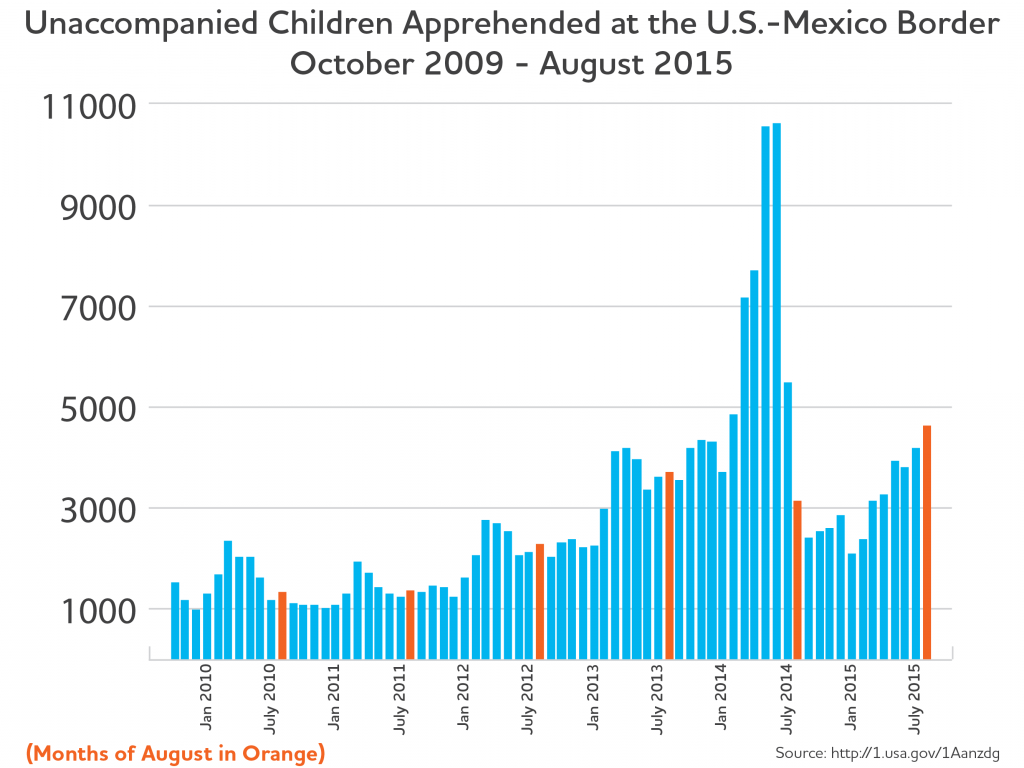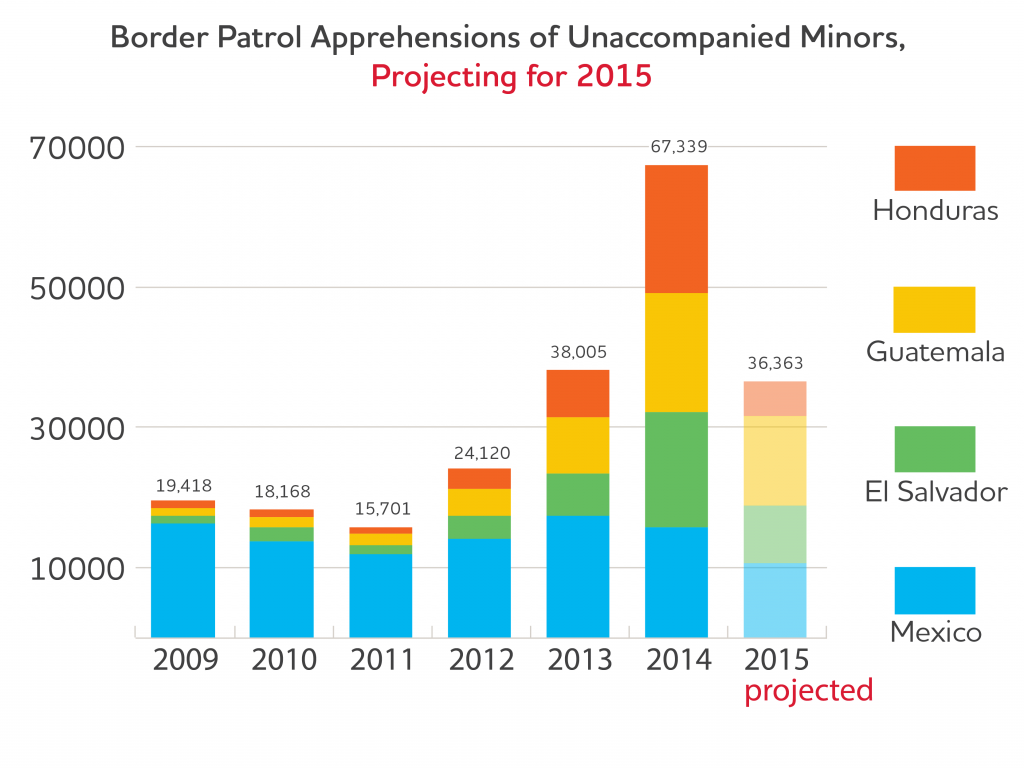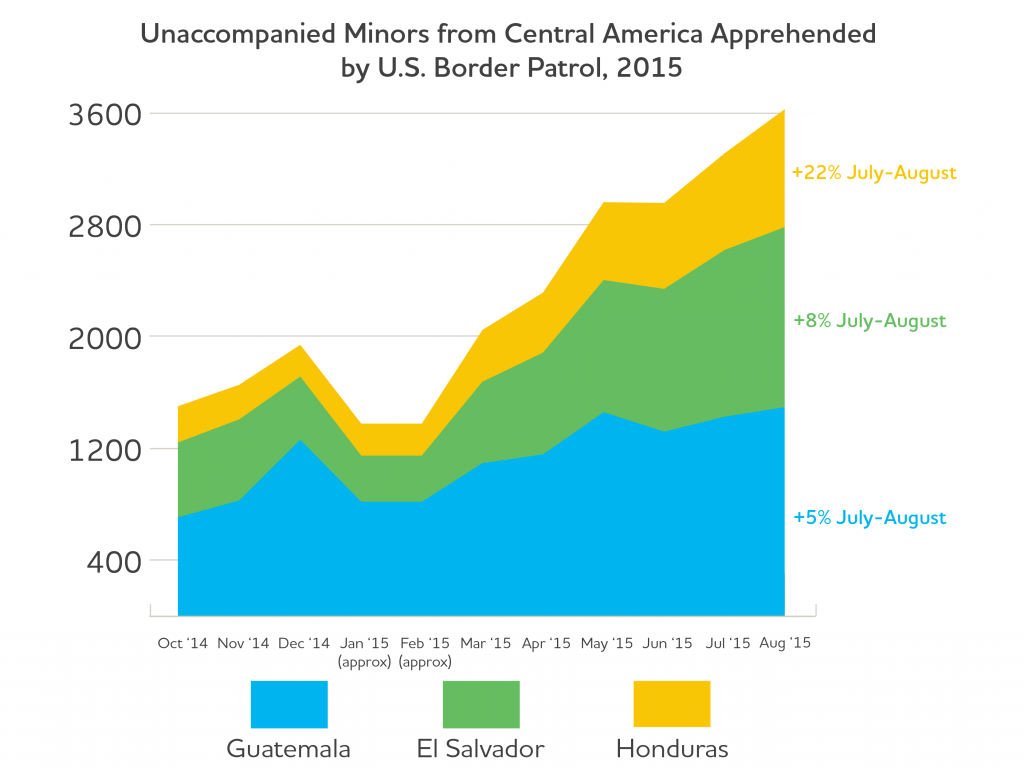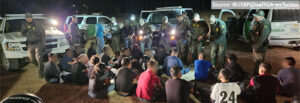The U.S. Must Urgently Address Root Causes of Migration
WOLA’s analysts were surprised by U.S. Border Patrol’s report that the agency apprehended 4,632 unaccompanied migrant children, most of them Central American, at the U.S.-Mexico border in August 2015.
This is the largest monthly number of apprehended minors since the unprecedented wave of children that made U.S. headlines in mid-2014. It is the seventh-largest monthly number since October 2009, the first month for which WOLA has data. (The other six are February-July 2014, the months of the “wave.”) August 2015 exceeded August 2014 (3,138 apprehended children) by 48 percent.
SEE ALSO: On the Front Lines: Border Security, Migration, and Humanitarian Concerns in South Texas
We expect that when the U.S. government’s fiscal year closes at the end of this month, Border Patrol will have apprehended about 36,500 children, about 26,000 of them from Central America’s “Northern Triangle” countries. This is just over half the 2014 total (67,339 and 51,705), placing 2015 near the same level as 2013, which was the second-highest year ever for apprehensions of unaccompanied minors at the U.S.-Mexico border. The increase in members of “family units”—parents traveling with children—was perhaps more notable in August, as Border Patrol apprehended 5,158 of them, up from 4,506 in July.
These grim statistics remind us that the violence and poverty that caused last year’s wave remain utterly unchanged, and that the U.S. government response, hamstrung by congressional inaction, has been negligible.
Border Patrol continues to apprehend most Central American minors and families in its Rio Grande Valley sector, the southernmost part of the U.S.-Mexico border, in Texas near the Gulf. This area is the shortest distance from Central America. Though in far smaller numbers (in the hundreds), data show apprehensions of unaccompanied minors more than doubling in some sparsely inhabited sectors elsewhere along the border, like west Texas’s Big Bend region and the Yuma sector of western Arizona. This may indicate that the children’s paid smugglers are attempting to use new routes to cross into the United States, in response to a buildup of border security in the Rio Grande Valley. If so, those who take these routes are seeking to avoid detection by U.S. authorities, unlike most children apprehended during last year’s “wave,” who often approached Border Patrol personnel voluntarily after crossing.
We don’t have enough information yet to explain this new growth, but offer two hypotheses.
Worsening violence, at least in El Salvador. This year has not seen dramatic change in already-high violent crime rates in Guatemala and Honduras. In El Salvador, however, the breakdown of a truce between major gangs has brought several months of horrific bloodshed. 911 people were murdered in El Salvador (population 6.2 million) in August; there is some probability that El Salvador may end 2015 with a homicide rate exceeding 100 per 100,000 inhabitants, higher than has ever been measured in any Central American country. However, while arrivals of children from El Salvador are increasing, it is children from Honduras whose numbers grew the most from July to August (22 percent, versus 8 percent for El Salvador), suggesting that rampant violence continues unabated and remains a driving factor for migration.
Smugglers are adjusting to changes in border security. At the height of the unaccompanied migrant child “wave” last year, Mexico launched a “Southern Border Plan,” an increase in immigration operations that nearly doubled the number of Central American citizens whom Mexican authorities apprehended and deported, on many occasions without properly screening them first for protection concerns.
In July, WOLA staff visited Mexico’s southern border zone and found that the Southern Border Plan has brought some dramatic changes in the routes and methods that migrants and their well-paid smugglers employ to get across Mexico. (Our report on this visit is coming soon.) Smugglers have had to rebuild networks, find new ways around checkpoints, and bribe more officials in order to transport children and families, who usually travel by road. They appear to be making gradual progress toward rebuilding or creating these networks, as probably evidenced by the steady increases since January in the number of Central American children apprehended by U.S. authorities. Meanwhile, for now at least, it appears that Mexico’s own southern border enforcement has stabilized: personnel strengths, numbers of checkpoints, and apprehensions in the southern border zone are at far higher levels than before mid-2014, but they have leveled off.
Meanwhile, according to testimonies we heard in Chiapas, Mexico, migrant smugglers have adjusted to the crackdown by raising their prices. A trip from Guatemala to Texas that cost US$7,000 or US$8,000 two years ago likely costs US$10,000 or $11,000 now. This may be because of the additional risk of avoiding the crackdown—or it may reflect an increase in the amount of bribes smugglers must pay to bypass checkpoints and other controls, or to pay off organized crime groups, inside Mexico.
The August statistics are deeply troubling. It is too early to tell whether we are about to witness a new “wave,” but the possibility cannot be dismissed. It is a reasonable fear since the U.S. government hasn’t provided any additional support to address the root causes of migration from Central America, including the troublingly high levels of violence, poverty, and lack of opportunity. Addressing these root causes could prevent a recurrence of unaccompanied child migration.
Attempts to address the phenomenon and its causes have fallen flat. A mid-2014 emergency appropriation that would have increased U.S. immigration authorities’ capacity to judge children’s asylum claims failed in the face of stiff opposition in the House of Representatives. The Obama administration’s US$1 billion proposed aid package to Central America, which includes some important measures to address the insecurity and poverty that underlie this mass migration, remains stuck in a U.S. Congress where both chambers have deeply slashed the amount of assistance that would go to the region.
The only major policy change has come not from Washington, but from Mexico. The Mexican response was a crackdown that ignored the dangers thousands of returned Central American children might face. And now, the numbers seem to show that migrant smugglers are adapting anyway.




